Interview by Graham Haught in Berlin; Wednesday, Aug. 27, 2014
Stanka Koleva, a Bulgarian photographer based in Berlin for the last six years, told me over email that she would like the interview to take place in Tempelhof, an abandoned airport that is now a public park dividing Neukölln’s weekday attention with Hasenheide. When she arrived she was wearing a black dress and a cursive black trench coat with red lipstick. Before we started the interview she showed me a German version of Dostoevsky’s The Idiot that she had just started reading. She asked if it was OK if she blindfolded herself during the interview.
I’d like to begin Berlin Art Link’s first Art Interview with a quote from American author William Gaddis’s first novel, The Recognitions (published in 1955), a book discussing many things, one of which is the topic of authenticity or originality. I envision the Art Interview series as exploring (along with others) this question in dialogue with artists:
“Originality is a device that untalented people use to impress other untalented people to protect themselves from talented people…Most original people are forced to devote all their time to plagiarizing. Their only difficulty is that if they have a spark of wit or wisdom themselves, they’re given no credit. The curse of cleverness.”
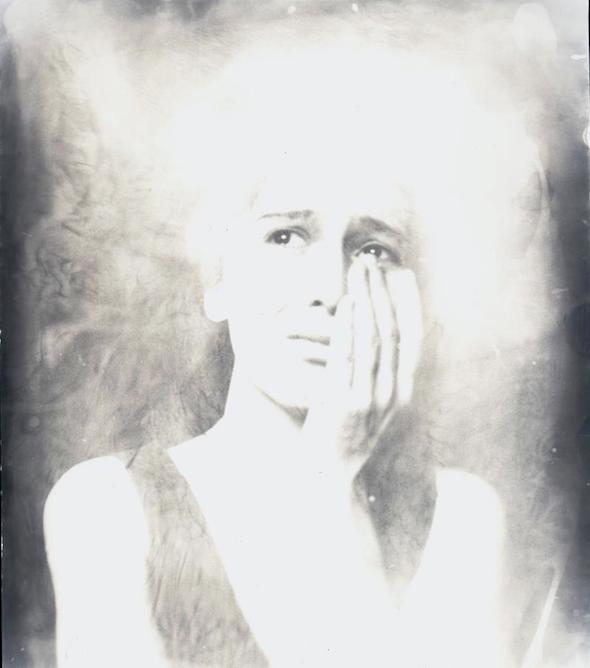 “Emotional Dystopia”, Orwo paper 18×24 (2012)
“Emotional Dystopia”, Orwo paper 18×24 (2012)
Graham Haught: Can you tell me what you are currently working on? Also a bit about your recent exhibition?
Stanka Koleva: I had an exhibition this past May 2014. It was a group show called “Manifestation of the Personal” curated by Stefka Tsaneva in Vaska Emanouilova Gallery – Sofia Art Gallery in Bulgaria. I’m happy to have participated in the show with my friend Kiril Bikov. Two of his works were shown.
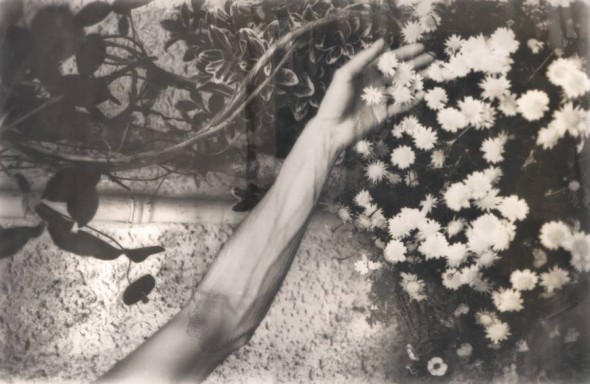 “Crucified”, 30×40 Fohar sheet, gel.silver print. Chinon CE4, Kodak technical pan. (2013)
“Crucified”, 30×40 Fohar sheet, gel.silver print. Chinon CE4, Kodak technical pan. (2013)
GH: What works were you showing?
SK:: I exhibited two self-portraits that show a woman confident in front of a camera. Both photos express how a woman doesn’t need someone to stand behind the camera to take pictures of her.
GH: Is this your viewpoint behind self-portraits?
SK: When I make self-portraits, I get to know more about myself. Every time I’m different, I change. I see my changes. I’ve been a photographer for ten years and every period in these ten years I’ve taken self-portraits and each one feels like I am meeting someone else that I need to speak to so I could get more information about myself.
GH: You said you started photography 10 years ago, can you talk about how it started, what’s your interest in it, and how it’s progressed?
SK: My grandfather died ten years ago and he left me a camera. He was just a traveller, traveling all around the world working on a ship. When I got his camera I started to take pictures. I went to the oldest photo store in my town and I met a photographer working there that is still doing darkroom photography. He’s the only one in my town. He told me to develop the films myself, but I corrected him by telling him that I wanted to pay him to develop my photos. He said, “You are going to pay me by developing them yourself.”
I got inspired and learned a lot from him. Basically we became very good friends for the next four or five years. He inspires me a lot. He always told me, “You can get inspired by what you see, but you have to show yourself when you show a work.”
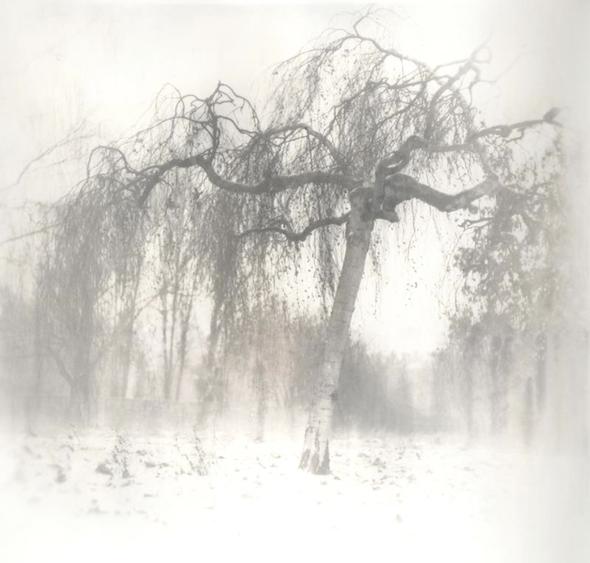 “Wind of Desire”, Mamiya C330, gel. silver print on Fohar sheet 30×40 (2012)
“Wind of Desire”, Mamiya C330, gel. silver print on Fohar sheet 30×40 (2012)
GH: What are the main things that inspire what you make?
SK: The human being. The human being and how he reacts in his environment and everything that happens to him: attractions, what is moving around him and how he reacts to things, nature, work, dreams, and home. Everything that I see inspires me to show those parts of the human.
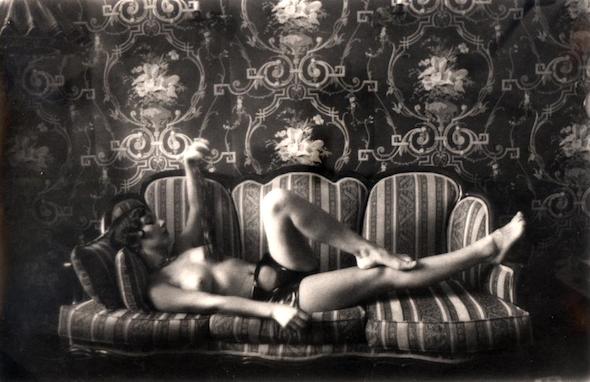 “Erotica” Chinon CE4, 18×24 Orwo paper (2012) (one of the two pieces exhibited in Sofia Art Gallery in Bulgaria this summer 2014)
“Erotica” Chinon CE4, 18×24 Orwo paper (2012) (one of the two pieces exhibited in Sofia Art Gallery in Bulgaria this summer 2014)
GH: It’s striking that you’re interested in expressing or articulating or exploring each human being that you photograph, including yourself. Correct me if I’m wrong but it seems as if the photos you take of other people are in situations of chaos (they are bound, they are struggling — there’s some moment of anguish or dilemma, a form of torment going on), but in your self-portraits you seem to have a lot of agency and confidence. Can you talk about the differences between that or is that something that just happens?
SK: This is a very good question. I guess all that I see is a reflection of myself on other people. Everyone is struggling with life, of course, and this is the part that makes you better. When you get through a storm the sun doesn’t immediately appear, sometimes this state of stasis is the best that you get. So I’m in the middle, I’m showing the storm so that people can see the light after it. Actually this is what I show to myself all the time: all this you have to go through so that you can step further.
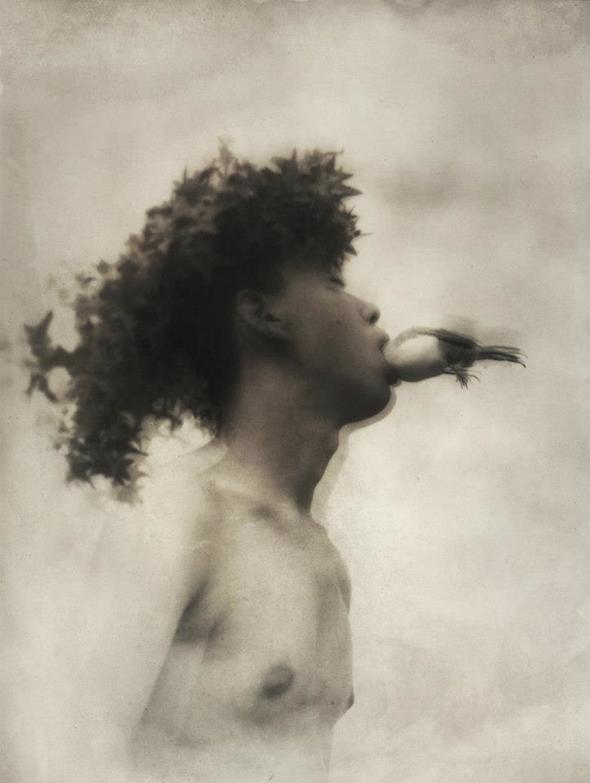 “I let myself be bird”, Hasselblad 500 cm, Orwo paper 18×24 (double exp.), no animals were harmed. (2012)
“I let myself be bird”, Hasselblad 500 cm, Orwo paper 18×24 (double exp.), no animals were harmed. (2012)
GH: Tell me your viewpoints on darkness. There seems to be a lot of darkness in your work?
SK: Yes, darkness is a big part of our lives. We are not just smiling and laughing all the time. I’ve decided to concentrate and focus on this, I feel more comfortable there. Every human being is very strong and I want to show the part of existence where we are fighting against anything that comes in our way and I also want to give hope to people that are hopeless, even if they are dark.
The darkness is part of us. It’s not a different reality, it’s just living here around us everywhere.
GH: What in your view is important about the past? Do you think we should think
about the past? Do you think we should live with the past? Do you think we should forget the past? And what role does photography have in conveying your viewpoints on this?
SK: Photography is now taking memories from the past. I always think all of these memories will be remembered through photography. So photography is just having these memories and taking them out and showing it because it has to exist as documentation of you living with your past and future and present. We are continuous — we are not just living now.
___________________________________________________________________________________
Additional Information
For more on Stanka Koleva visit: www.stankakoleva.com
___________________________________________________________________________________
Graham Haught is an artist and writer originally from California, now based in Berlin.grahamhaught.com



















